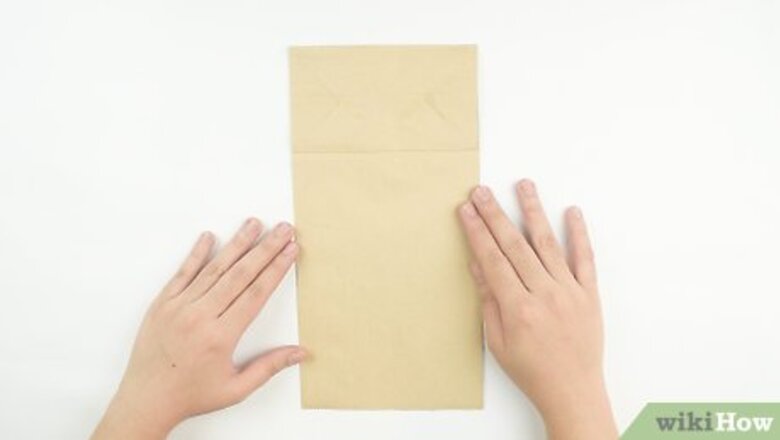
views
Creating a Simple Puppet
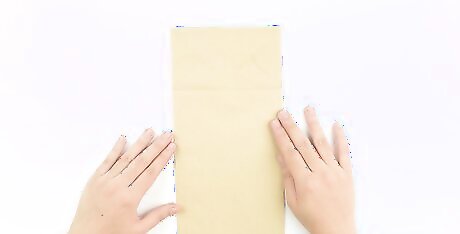
Lay the paper bag on its smooth side. Keep the bottom flap facing up. Point the opening toward you.
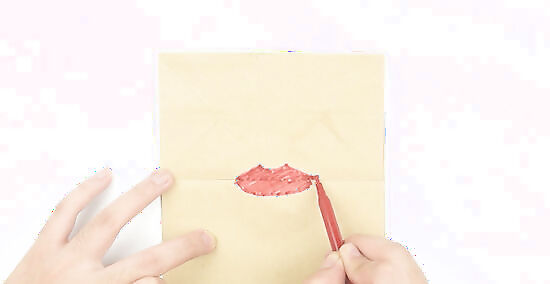
Draw the lips. Draw the upper lip on the flap, along its lower edge. Then draw the lower lip on the body of the bag, where the edge of the flap meets it. Use the entire width of the flap to create an exaggerated mouth if desired, or a smaller one in proportion to the other facial features.
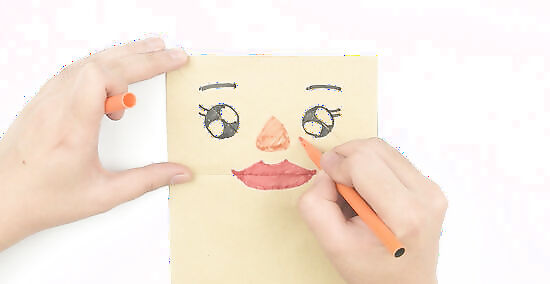
Draw the face. Use pencils, pens, crayons, and/or markers to draw outlines for the facial features (nose, eyes, eyebrows, and ears, as well as hair if desired).Then color them in.
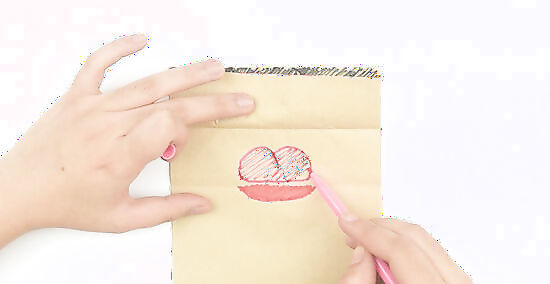
Draw the inside of the mouth. Open the flap. Be careful not to smooth out any creases. Draw the tongue below the crease that you find under the flap. Add the throat and uvula above the crease if desired. Alternately, you can cut out a small hole here wide enough for your finger and use that as your tongue.
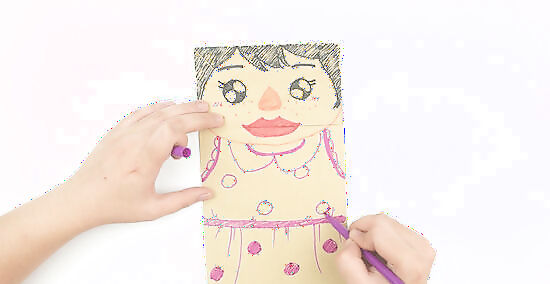
Fill in the body. Excluding the flap, use the lower three-quarters of the bag’s body to design your puppet’s body. For people, outline clothes and color them in. For animals, outline their color pattern and then color in.
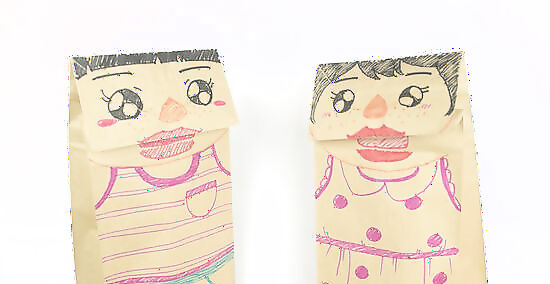
Use your puppet. Slide your hand into the opening. Curl your fingers up and under the flap. Extend and curl your fingers to make your puppet “talk.”
Using Craft Materials to Make Your Puppet Pop
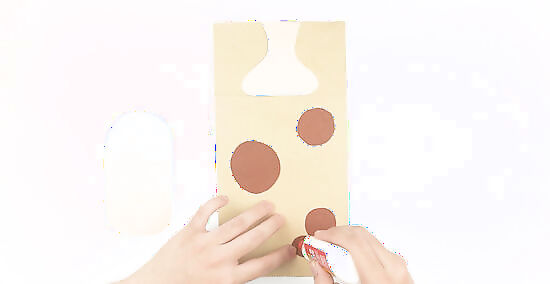
Color your bag. Outline your puppet’s design in pencil on the bag. Color in the areas either by painting them or by gluing cutouts of colored construction paper to the bag. For animal puppets of reptiles and fish, use cutouts from various colors of construction paper to create multicolored scales. For birds, make cutouts of feathers from construction paper. Glue them to the bag in layers, starting at the bottom of the bag, with each added row slightly overlapping the one underneath it for a more textured effect.
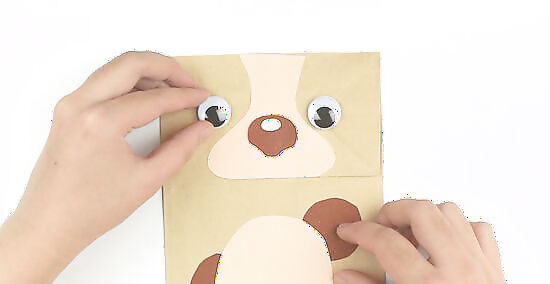
Use alternate materials for facial features. Glue a pair of googly eyes to the bag instead. With a steady hand, outline the bag’s lips with glue and then paint or ink them for added dimension once the glue has dried. For the nose, create a glue outline and color it in as you did with the lips, or glue either an appropriately sized pompom or a small piece of putty sculpted into a nose to the bag.
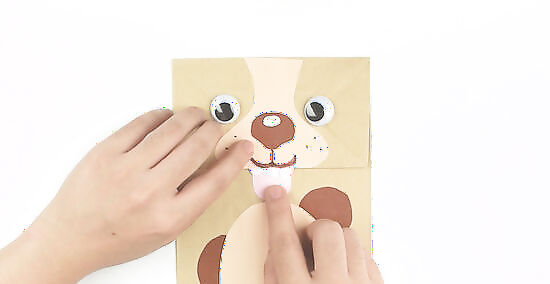
Give your puppet some extra bite. Use a sheet of white construction paper to make a cutout of teeth. For the upper row, add a half-inch of extra space along the top. Once you cut it out, apply glue along the top with your cutout facing up. Then stick it underneath the bottom of the flap. For the bottom row, apply glue to the back of the cutout. Fix it to the body of the bag. As desired, either fit it in place so the upper row and bottom row meet when the mouth is closed, or hide it underneath the upper row and the bottom of the flap to create an overbite.
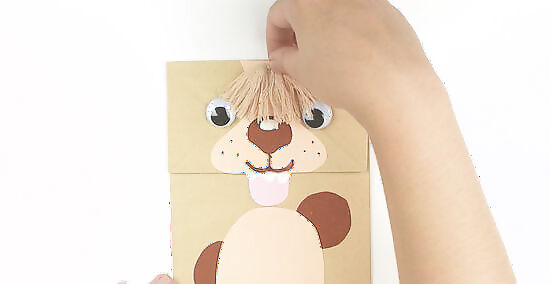
Add hair. Cut yarn into strips of any desired length. Glue the ends to the top of the bag’s flap. Use strips of ribbon to tie the yarn into pigtails or braids. Use yarn to make mustaches and beards as well. For spiky or crazier hair, use colored pipe cleaners instead. For animal puppets of mammals, use layers of yarn to create fur. Cut strips of desired length and glue them to the body of the bag. Start your first row along the bottom of the bag rather than the top in order to avoid having to lift layers of yarn to glue underneath them, which might make a mess. Use colored pipe cleaners for whiskers.
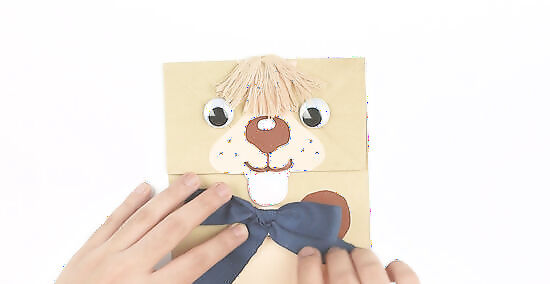
Create clothing. Glue fabric swatches onto the bag. If desired, crease or pleat them beforehand for extra dimension. Then glue strips of ribbon along the collar for an eye-catching trim.
Creating Separate Limbs and Appendages
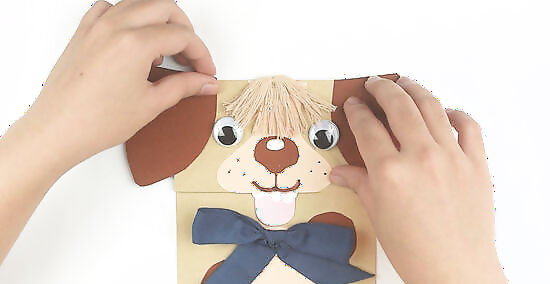
Add ears. Using a stiff sheet of construction paper, outline each ear with pencil. Outline an extra strip to each ear, about a half-inch wide, where the ear will connect to the head. Cut the ears out with scissors. Then, with each ear facing up, apply glue along the extra strip and stick that to the back of the bag, behind the flap.
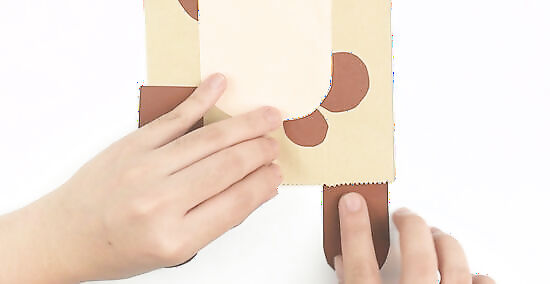
Make legs. Use a stiff sheet of construction paper or thin cardboard for more durability. Design a pair of legs with pencil. Allow extra length at the top to use as a glue tab later on. Cut the legs out with scissors and then, depending on the materials you’ve used for the bag itself, use paint, construction paper, and/or fabric swatches to match your puppet’s skin and/or clothing. Then, with the legs facing up, apply glue to the extra length on top. Glue the legs to the inside of your puppet, underneath the front of the bag, so they dangle out of the opening and in front of your own arm when you’re wearing the puppet. Since the legs will dangle out of the opening, be gentle with your hand as you slip it in or out of the puppet.
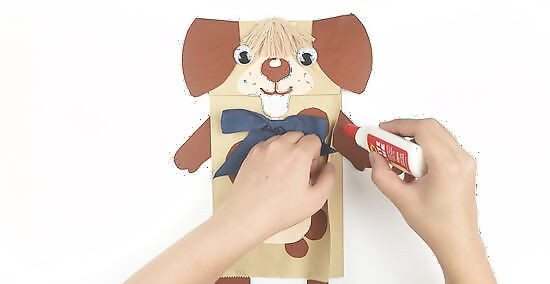
Create arms. Use a stiff sheet of construction paper or thin cardboard. Outline each arm separately with pencil. Allow extra length at the end of each, at the “shoulder,” where it will connect to the puppet. Cut each arm out. Depending on the materials you’ve used for the bag itself, use paint, construction paper, and/or fabric swatches to match the arms to the puppet’s design. With each arm facing up, apply glue to the extra length at the shoulder and stick the glue tab to the back of the bag. To manipulate the arms, trace a second cutout for each arm once you’ve cut out the first: a front-side and a back-side. Glue the two together, leaving a small gap at or below the wrist. Fold the arm where its elbow should be to create a crease. Then insert the thin end of a chopstick (or a similarly long and tapered object, like a sharpened pencil) into the gap by the wrist. Manipulate the chopstick to bend and extend the arm. For bird puppets, use the same method to create wings. For fish puppets, use the same method to create lateral fins.
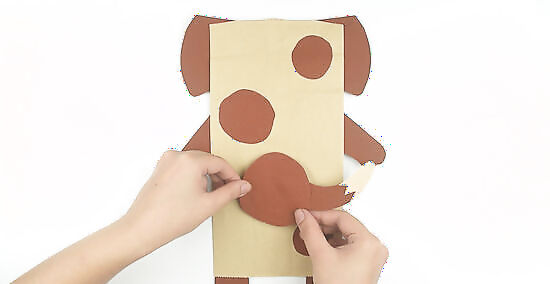
Add a tail. Use a stiff sheet of construction paper or thin cardboard. Outline your tail with pencil, allowing extra length at the end where it will meet the body. Once you cut it out, crease the extra length to create a glue tab. Depending on the materials you've used for the bag itself, use paint, yarn, or construction paper to match the tail to the puppet's design. Apply glue and stick the glue tab to the back of the body. For a more durable tail, trace your first cutout on more construction paper or cardboard to create a second cutout. Glue the two together except for the extra length at the end where they will meet the body. Then crease the extra lengths in opposite directions, apply glue to each, and fix the tail to the back of the body. For fish puppets, use the same method to create a dorsal fin.




















Comments
0 comment